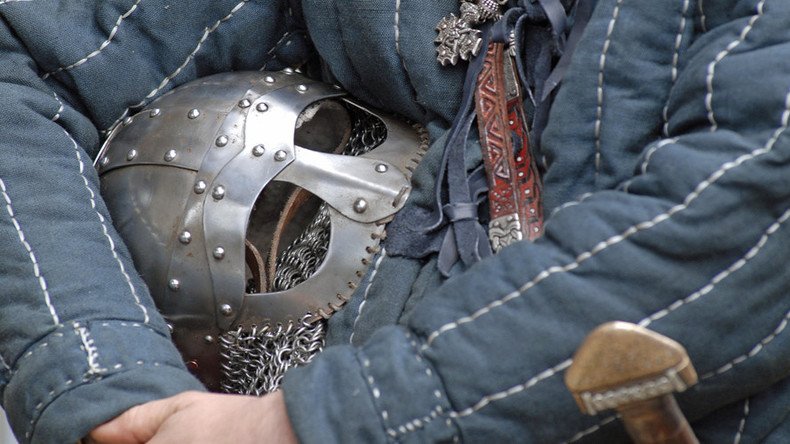‘Allah’ NOT embroidered in Viking burial clothing – Islamic Art professor

Last week Swedish researchers made a startling claim they discovered the word ‘Allah’ embroidered into ancient Viking burial clothing. These findings have now been questioned by experts claiming the inscription “makes no sense in Arabic.”
Annika Larsson’s findings, which concluded that the inscriptions were evidence that Viking “burial customs were influenced by Islam and the idea of an eternal life in Paradise after death,” were widely reported last week as a ‘historic first’.
READ MORE: Viking burials inspired by Islam, archaeologist reveals
Associate Professor of Islamic Art and Architecture at the University of Texas, Stephennie Mulder, however, claims there is a “serious problem of dating.”
The issue is a serious problem of dating. #Birka#Viking textile is 10th c. Style of epigraphy in Larsson’s drawing is 500 years later. 8/60
— Stephennie Mulder (@stephenniem) October 16, 2017
It’s a style called square Kufic, and it’s common in Iran, C. Asia on architecture after 15th c., ex: Safavid Isfahan w/Allah and Ali 9/60 pic.twitter.com/pbGJNFITGk
— Stephennie Mulder (@stephenniem) October 16, 2017
Mulder explains that the Kufic script didn’t exist at the time of the Vikings and that even if it did, the inscription still doesn’t mean anything in Arabic.
2. But let’s assume there are 10th c. Central Asian textiles with 2Kufic. Even so, it turns out Larsson’s drawing doesn’t say ‘Allah’ 15/60
— Stephennie Mulder (@stephenniem) October 16, 2017
Instead the drawing says للله ‘lllah’, which basically makes no sense in Arabic. 16/60 https://t.co/jgodaIhpFp
— Stephennie Mulder (@stephenniem) October 16, 2017
Mulder adds that Larsson’s claim is “based on extrapolation, not evidence,” citing a textile specialist, Carolyn Priest-Dorman, who writes that the interpretation is based on “extensions of pattern, not an existing pattern.”
4. But the final nail in the coffin *cough* I mean burial ship is that Larsson’s claim is based on extrapolation, not evidence. 27/60
— Stephennie Mulder (@stephenniem) October 16, 2017
As #Viking textile specialist Carolyn Priest-Dorman puts it, text based on “extensions of pattern, not on existing pattern” 28/60
— Stephennie Mulder (@stephenniem) October 16, 2017
Priest-Dorman and Mulder’s analysis details how the texts say ‘Allah’ only if you presume that the embroidered fabric was originally twice as wide as it is now and that the pattern was replicated in specific ways, leading Mulder to say that “Larsson’s extensions are entirely conjectural.”
These extensions practically double width of band. Not mentioned in press accounts: Larsson’s extensions are entirely conjectural. 33/60
— Stephennie Mulder (@stephenniem) October 16, 2017
Speaking to RT.com, Annika Larsson, a researcher in textile archaeology at the Department of Archaeology and Ancient History at Sweden’s Uppsala University, contested her critics’ claims, saying that there is a “misunderstanding” from Mulder about the images.
“The scripts on the ribbons are like secret messages. First I thought they were copied by someone who didn't understand the message. But the patterns in the ribbons are like a puzzle or a rebus to read,” she said.
“I have spoken to Muslims that tell me that even today sometimes you don't want to say/write/depict the Gods name clearly, so then you can make it like a puzzle, and even mirror it. I think that is what they have done on these ribbons.
“The project is represented in an Exhibition at Enköpings Museum not far from Stockholm, where we have reconstructed two ribbons.
“In this specific case we see a puzzle of two patterns – then mirrored. It is like a hidden or secret message, that is still sometimes used in the Muslim tradition when writing the name of God,” she added.












